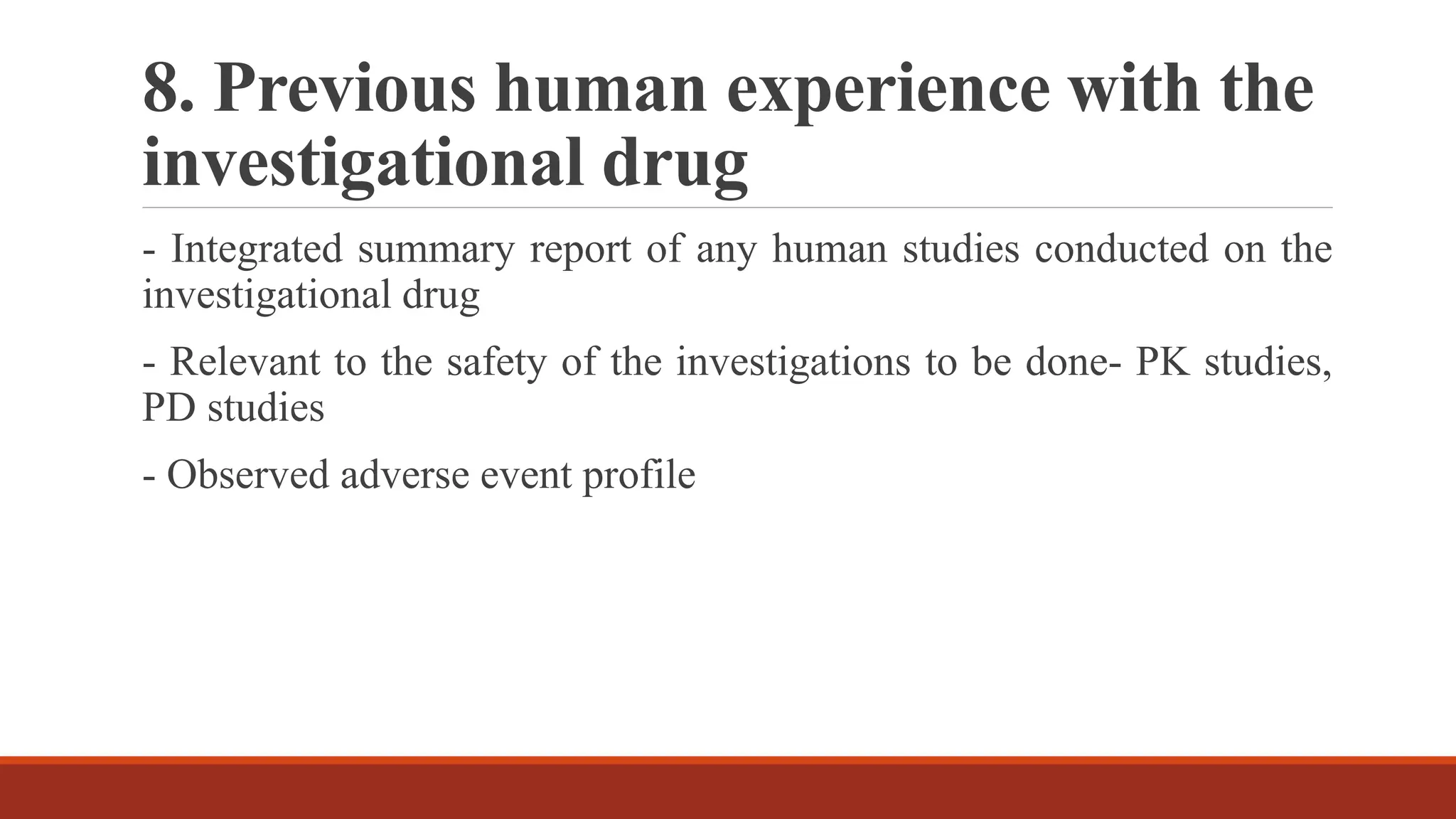The document provides information on Investigational New Drug (IND) applications. It defines an IND as a submission to the FDA requesting permission to study an investigational drug product in humans. Key points include:
- An IND application contains preclinical and clinical data to demonstrate it is reasonably safe to study the drug in humans.
- It allows the sponsor to initiate and conduct clinical trials of the investigational drug.
- The IND application process helps ensure the safety of clinical trial subjects and that clinical studies will yield valid results to determine a drug's safety and effectiveness.






































